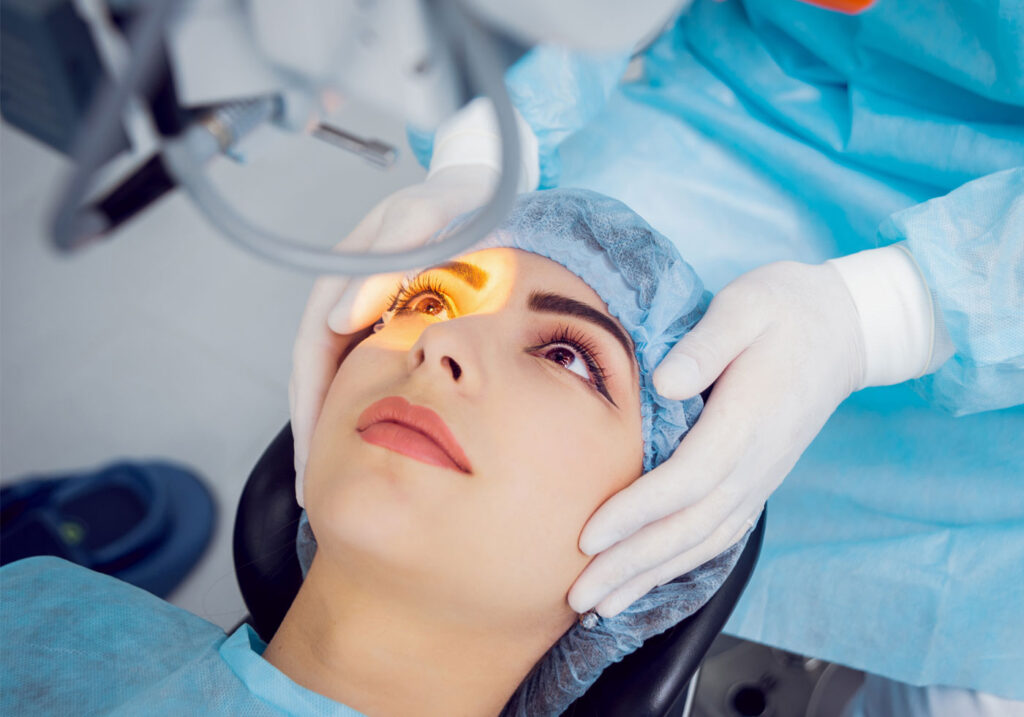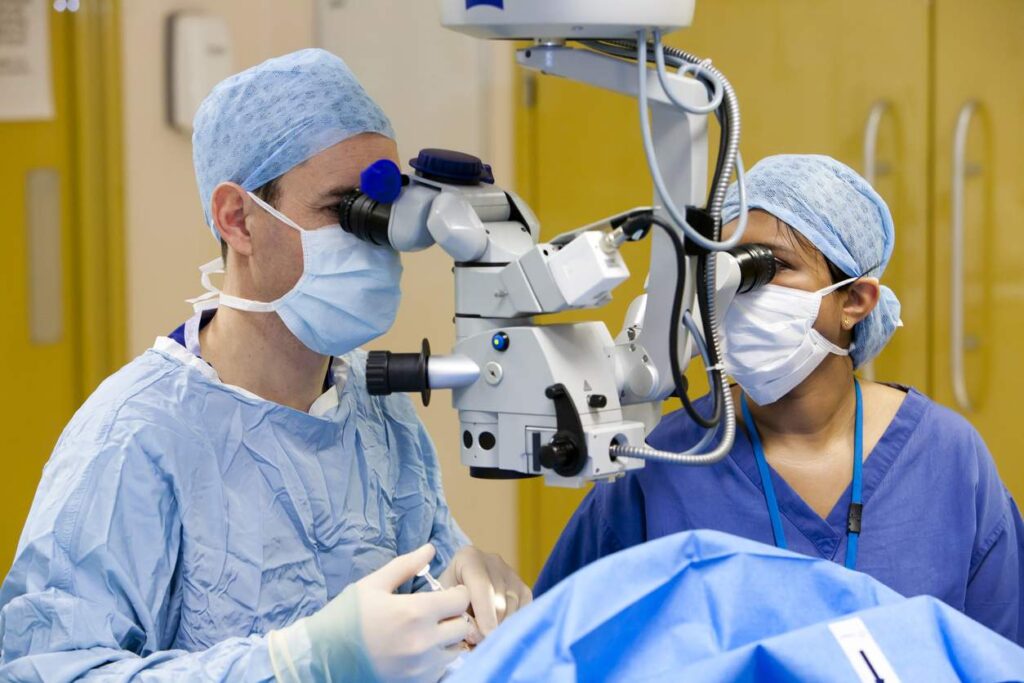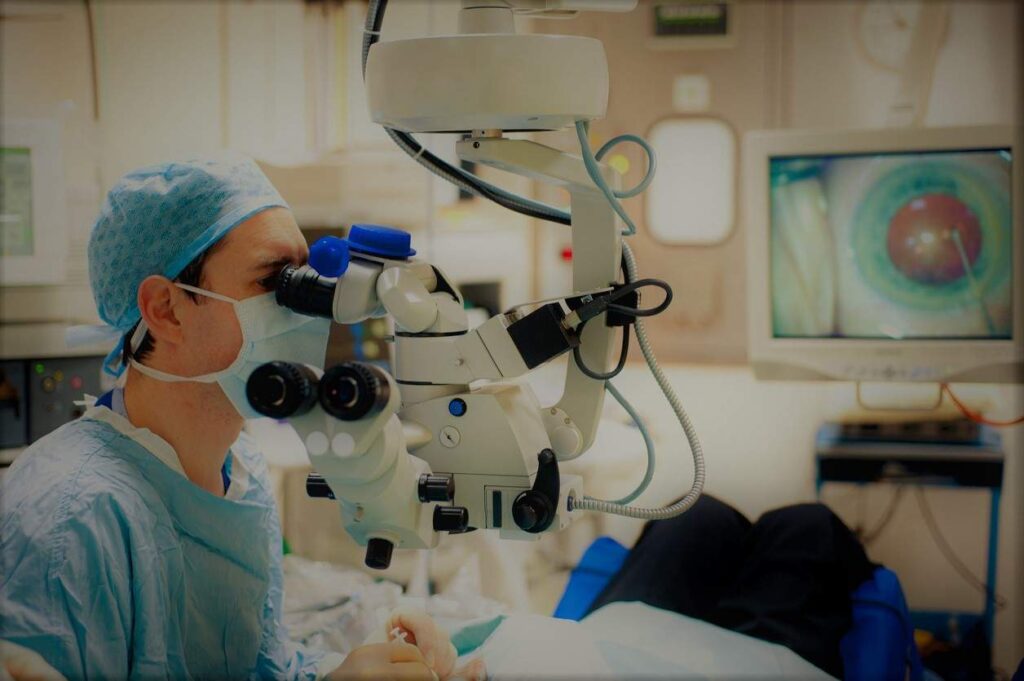
Transforming Your Vision through LASIK Eye Surgery
Are you tired of relying on glasses or contact lenses to see clearly? Do you dream of having crystal-clear vision without the hassle of corrective eyewear? If so, LASIK eye surgery might be the solution you’ve been searching for.
Understanding the Basics of LASIK Eye Surgery
If you’re considering LASIK eye surgery, it’s essential to understand the basics of this life-changing procedure. In simple terms, LASIK stands for “Laser-Assisted In Situ Keratomileusis,” a surgical intervention that reshapes the cornea to correct vision problems such as nearsightedness, farsightedness, and astigmatism. By reshaping the cornea, LASIK allows light to focus correctly onto the retina, resulting in improved vision.
The science behind LASIK is fascinating. During the procedure, a thin flap is created on the cornea’s surface using a microkeratome or femtosecond laser. This flap is then lifted, and the underlying corneal tissue is reshaped with an excimer laser. Once the cornea is reshaped, the flap is carefully repositioned, aiding in the healing process, which is typically swift and without major complications.
One of the most remarkable aspects of LASIK is its precision. The excimer laser used in the procedure is capable of removing microscopic amounts of corneal tissue with incredible accuracy. This precision ensures that the cornea is reshaped precisely according to the patient’s unique prescription, resulting in optimal visual outcomes.

Furthermore, LASIK has evolved significantly since its inception. Technological advancements have led to the development of bladeless LASIK, where a femtosecond laser is used to create the corneal flap instead of a microkeratome. This advancement has reduced the risk of complications and improved the overall safety and effectiveness of the procedure.
It’s important to note that LASIK is not suitable for everyone. A comprehensive eye examination is necessary to determine if you are a good candidate for the procedure. Factors such as the thickness of your cornea, the stability of your prescription, and the overall health of your eyes will be evaluated to ensure the best possible outcome.
While LASIK is considered a safe and effective procedure, like any surgical intervention, it does carry some risks. These risks include dry eyes, glare, halos, and difficulties with night vision. However, it’s crucial to remember that the majority of patients experience significant improvement in their vision and are highly satisfied with the results.
The LASIK Procedure: A Step-by-Step Guide
Before undergoing LASIK, a comprehensive pre-surgery consultation and evaluation are essential. During this stage, your eye doctor will assess your eye health, review your medical history, and determine your eligibility for the surgery. It is crucial to disclose any pre-existing conditions or medications that may affect the procedure’s success.
During the actual LASIK surgery, you will be positioned comfortably on a reclining chair. Anesthetic eye drops are used to numb the eye, ensuring minimal discomfort during the procedure. A device known as an eyelid speculum is used to keep your eye open while the surgeon creates the corneal flap.
Next, the surgeon uses an excimer laser to reshape the cornea based on your unique prescription. While the laser is in operation, you may experience a slight pressure sensation and a temporary blur in your vision. Don’t worry; this is normal!
Once the cornea is reshaped, the surgeon gently repositions the flap, allowing it to adhere naturally. As the flap bonds with the cornea, no stitches or bandages are required. The entire procedure usually takes less than 15 minutes per eye, with minimal downtime.
After the LASIK surgery, it is common to experience some mild discomfort and sensitivity to light. Your eye doctor will provide you with specific post-operative instructions to ensure a smooth recovery. It is important to follow these instructions diligently to optimize your healing process.
In the first few hours following the procedure, it is recommended to rest your eyes and avoid any strenuous activities. You may also be prescribed eye drops to prevent infection and promote healing. These drops should be used as directed by your doctor.
Over the next few days, you may notice some fluctuations in your vision as your eyes adjust to the changes made during the surgery. This is a normal part of the healing process, and your vision will continue to improve gradually over time.
It is crucial to attend all scheduled follow-up appointments with your eye doctor to monitor your progress and ensure that your eyes are healing properly. During these appointments, your doctor will evaluate your vision and address any concerns or questions you may have.
Remember, LASIK is a safe and effective procedure that has helped millions of people achieve clearer vision. By understanding the step-by-step process and following your doctor’s instructions, you can have peace of mind knowing that you are taking the necessary steps towards improving your eyesight.

Benefits of LASIK Eye Surgery
LASIK eye surgery offers numerous benefits that can significantly enhance your quality of life. Firstly, improved vision quality is the most immediate advantage. Many patients experience 20/20 vision or better after LASIK, reducing or eliminating their dependence on glasses or contacts.
In addition to improved vision, LASIK can bring long-term cost effectiveness. Although the initial investment may seem significant, consider the money you’ll save on glasses, contact lenses, and lens care products over the years. LASIK is an investment in your future vision and can lead to significant cost savings over time.
Moreover, LASIK provides lifestyle benefits. Imagine the freedom of waking up and seeing the world clearly, without having to search for your glasses or put in contact lenses. Engaging in sports, swimming, and other physical activities becomes more convenient when you no longer have to worry about your vision correction.
Furthermore, LASIK eye surgery offers a quick and relatively painless procedure. The surgery itself typically takes only about 15 minutes per eye, and most patients experience minimal discomfort during the process. The recovery time is also relatively short, with many patients able to resume their normal activities within a day or two.
Another advantage of LASIK is its high success rate. The procedure has been performed for many years, and advancements in technology have made it even more precise and effective. The majority of patients achieve their desired vision correction, with only a small percentage experiencing minor complications that can be easily managed.
Additionally, LASIK is a versatile procedure that can address a wide range of vision issues. Whether you have nearsightedness, farsightedness, or astigmatism, LASIK can often provide a suitable solution. The procedure can be customized to your specific needs, ensuring that you achieve the best possible outcome for your unique vision requirements.
Lastly, LASIK offers long-lasting results. Once the surgery is complete and your vision has stabilized, the effects are typically permanent. This means that you can enjoy the benefits of LASIK for many years to come, without the need for ongoing treatments or adjustments.
In conclusion, LASIK eye surgery not only improves your vision but also offers long-term cost savings, lifestyle benefits, a quick and relatively painless procedure, a high success rate, versatility in addressing various vision issues, and long-lasting results. Consider the many advantages of LASIK and take the first step towards clearer vision and a better quality of life.
Potential Risks and Complications of LASIK
Although LASIK is generally considered safe and effective, it’s essential to be aware of potential risks and complications. Understanding these risks can help you make an informed decision about whether LASIK is right for you.
Some patients may experience short-term side effects after LASIK, such as dry eyes, temporary visual disturbances, or halos around lights. These side effects are usually temporary and resolve as the eyes heal. However, it’s essential to discuss any concerns with your eye doctor.
While rare, there are also potential long-term risks associated with LASIK. These include a small risk of infection, corneal ectasia (a thinning and bulging of the cornea), or the need for further enhancements or touch-up surgeries. Your eye doctor will evaluate your individual case and discuss the likelihood of these complications.
One of the short-term side effects that some patients may experience after LASIK is glare. This can occur when the cornea is reshaped during the procedure, causing light to scatter and create halos or starbursts around bright lights. While this effect is usually temporary and diminishes over time, it’s important to be aware of it so that you can manage your expectations during the healing process.
In addition to the potential risks mentioned above, it’s worth noting that LASIK may also cause dry eyes in some patients. This occurs when the surgery disrupts the normal tear film on the surface of the eye, leading to a temporary decrease in tear production. Your eye doctor will provide you with lubricating eye drops to help alleviate any discomfort and promote healing.
When considering the long-term risks of LASIK, it’s important to understand that corneal ectasia is an extremely rare complication. This condition involves a progressive thinning and bulging of the cornea, which can lead to a decrease in visual acuity. However, advancements in technology and screening processes have significantly reduced the occurrence of corneal ectasia, making it an even rarer occurrence.

Furthermore, it’s crucial to remember that the need for further enhancements or touch-up surgeries after LASIK is relatively uncommon. While some patients may require additional procedures to fine-tune their vision, the majority of individuals achieve their desired visual outcome with the initial surgery. Your eye doctor will carefully assess your case and provide you with a comprehensive understanding of the likelihood of needing any further interventions.
Determining Your Eligibility for LASIK
Not everyone is an ideal candidate for LASIK eye surgery. Your eye doctor will evaluate various factors to determine your eligibility for the procedure.
Ideal candidates for LASIK are typically over 18 years old, have stable vision prescription for at least one year, and have overall good eye health. Additionally, certain conditions and circumstances may affect your eligibility for LASIK. These include pregnancy, nursing, certain autoimmune diseases, or severe dry eye syndrome.
If you are interested in LASIK, schedule a consultation with a qualified eye surgeon who can assess your unique situation and answer any questions or concerns you may have.
During your consultation, the eye surgeon will conduct a thorough examination of your eyes. This may involve measuring your corneal thickness, assessing your tear production, and evaluating the overall health of your eyes. These tests help the surgeon determine if your eyes are suitable for LASIK and if there are any underlying conditions that may increase the risks associated with the procedure.
Furthermore, the surgeon will review your medical history to identify any factors that may impact your eligibility for LASIK. They will inquire about any previous eye surgeries, eye injuries, or existing eye conditions that could affect the outcome of the procedure.
It is important to provide the surgeon with accurate information about your lifestyle and habits. For example, if you participate in contact sports or have a job that involves exposure to dust or chemicals, the surgeon may need to consider additional factors when determining your eligibility for LASIK.
Remember, LASIK is a surgical procedure, and like any surgery, it carries potential risks. The surgeon will discuss these risks with you during the consultation, ensuring that you have a comprehensive understanding of what to expect. They will also address any concerns or questions you may have, helping you make an informed decision about whether LASIK is the right choice for you.
In conclusion, LASIK eye surgery offers a life-transforming solution for individuals seeking freedom from glasses or contact lenses. By understanding the basics of LASIK, the step-by-step procedure, potential benefits, as well as the risks and eligibility criteria, you can make an informed decision about whether LASIK is the right vision correction option for you. Consult with a qualified eye surgeon to discuss your individual case and take steps towards transforming your vision through LASIK eye surgery.
Related: The Journey to Crystal Clear Vision with Expert LASIK Surgery
